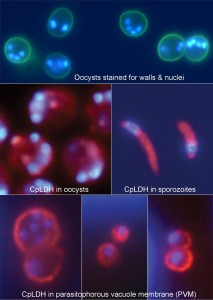A double dose of Dirty Dining, Las Vegas-style.
Darcy Spears has a tie for us tonight, with two restaurants just two blocks apart.
Darcy: Hi… Oh! Don’t turn around and walk away!
 It’s a common reaction when Contact 13 shows up, health inspection in hand and full of questions.
It’s a common reaction when Contact 13 shows up, health inspection in hand and full of questions.
Bund Shanghai restaurant on Decatur and Spring Mountain was hit with 36 demerits and a C grade.
Inspectors found visibly dirty food contact surfaces, old food debris on the can opener and meat slicer and a dirty ice machine.
There was also heavy debris on the floor under kitchen equipment, a badly stained cutting board, and no hair restraints for food handlers.
“A lot of things I didn’t know,” said temporary manager Angela Liu.
She says she’s not used to overseeing the kitchen staff and admits she didn’t check everything the night before their unannounced inspection.
Darcy: That’s a lot of stuff that was wrong.
Angela: Yeah, lot of stuff wrong, yeah, so, I tell them, you know. I tell them and we now fix it–everything.
Inspectors also found a full handsink leaking dirty water. And food in the prep table not protected from contamination.
Angela takes us back to show us what is now a much cleaner kitchen.
She says the owner made it clear that he never wants to see another “C” grade.
Angela: If C again, they all lose their job.
Darcy: That’s it. Everyone’s job’s on the line.
She shows us how everything is now labeled and double-covered to keep inspectors happy and customers healthy.
Darcy: It’s about food safety.
Angela: Yeah, food safety. Right. It’s very serious. Oh, my god. (she pauses to swat away a fly buzzing around her face.)
Darcy: You don’t want a fly in here, do you?
Thai Original BBQ on Jones and Flamingo was shut down with 36 demerits due to an imminent health hazard. Inspectors found them operating without hot water.
Employees called the boss and handed the phone to Darcy Spears. The boss tries to say the only problem was a broken water heater.
Darcy on phone: Serena, it wasn’t just that. That was definitely the reason that you got shut down as opposed to just getting a C grade, but the health inspection is four pages long.
For starters, the grease trap was leaking onto the floor and an uncovered drain pan was about to overflow.
There was heavy grease build-up. Most of the equipment was dirty. And the knobs on the stove were caked with old food debris.
Floors and ceilings were dirty.
Raw beef and chicken were stored over cooked noodles.
And there was a fly infestation in the storage room. You can see a whole bunch of them on a box of foam cups and crawling all over the ceiling.
It looked like a bunch of flies had hatched.
The boss says they weren’t having the pest control company visit often enough.
She allowed employees to show us around that storage room and the kitchen, which appears to be all cleaned up.
 Chairman of the council’s licensing and public protection committee Barbara Dring told colleagues she was ‘saddened’ that the list of 127 takeaways and restaurants with zero-ratings for food hygiene on October 28, 2015 was published by the Birmingham Mail.
Chairman of the council’s licensing and public protection committee Barbara Dring told colleagues she was ‘saddened’ that the list of 127 takeaways and restaurants with zero-ratings for food hygiene on October 28, 2015 was published by the Birmingham Mail.





